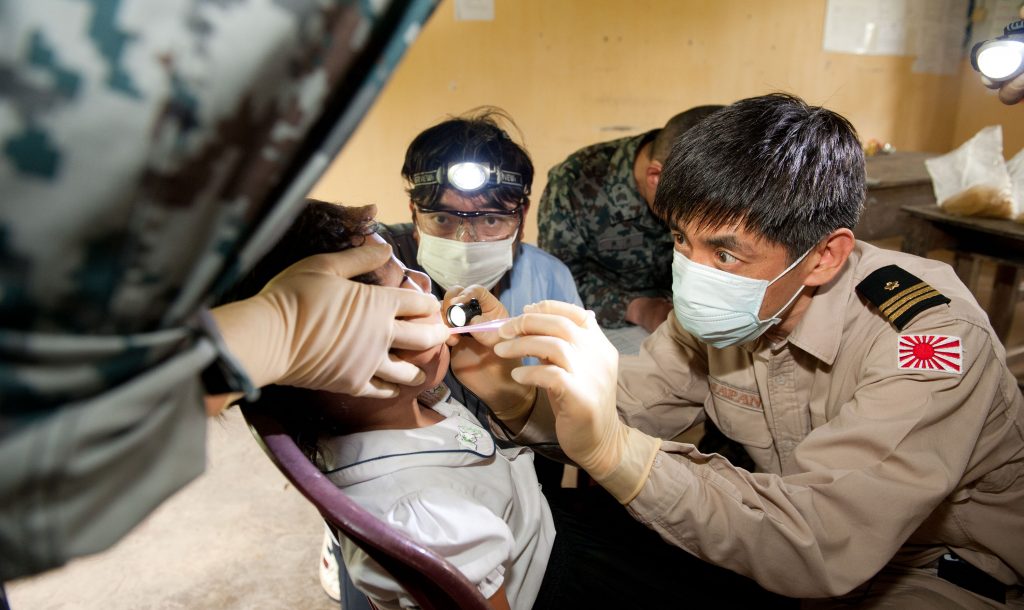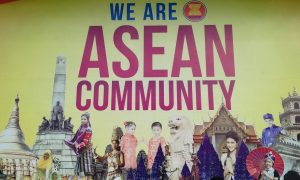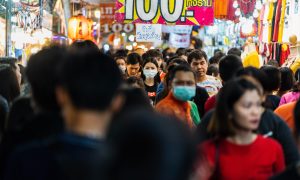On the face of it, humanitarian action in Southeast Asia seems guided by a common aspiration to move away from the traditional dominance of Western international organisations. Virtually everyone agrees that localisation makes assistance more legitimate and more effective because actors in close proximity to emergencies are flexible and accustomed to the contexts in which they occur. They can gain access to populations in need which established members of the ‘humanitarian club’ cannot reach, and provide solutions more in tune with concrete needs and conditions on the ground.
But though old and emerging humanitarian actors have rallied around the concept of localisation, implementation is lagging. Barriers to direct cash-flows to local organisations remain. Global-local partnerships are mostly short-term and project-related instead of long-term and strategic. Humanitarian professionals complain that they are still often ‘subcontracted’ to implement projects designed in the offices of major non-governmental organisations. Unless differences over the meaning of localisation are openly addressed, a true transformation of the humanitarian landscape will remain just out of reach.
Ongoing White paternalism
The 2004 Indian Ocean Tsunami relief efforts demonstrated the detrimental effects of a massive influx of foreign aid personnel. When I interviewed Indonesian officials working on humanitarian assistance and disaster relief in 2018, many of them vividly recalled the feeling of not being in control over who was doing what in the affected areas, and having to carry the administrative burden of managing external actors in addition to coping with the disaster itself. A lack of cultural sensitivity among Western aid workers further complicated relief efforts, especially in the religiously conservative Aceh region, they claimed.
Unsurprisingly, ASEAN and its member state governments are among the most vocal supporters of localisation. Localisation resonates with both the notion of ASEAN as a ‘people-centered’ community and the longstanding skepticism of governments towards external interference. At the World Humanitarian Summit in Istanbul in 2016, the ASEAN Ministers in charge of Disaster Management jointly argued that nation-states should lead humanitarian assistance and disaster relief. A major outcome of the meeting was the Grand Bargain, a global framework in which major donors and humanitarian organisations pledge to intensify partnerships with local and national actors and allocate at least 25 percent of funding to them.
But on the ground, emergency operations reveal frictions and uncertainty over responsibilities. A palpable example was the Indonesian government’s disaster response after the 2018 Sulawesi earthquake and tsunami, which emphasised national and sub-national authority while limiting access by external organisations. Hailed by some as a turning point for localisation, many established actors were caught by surprise and pushed back against their perceived exclusion.
Of course, fundamental shifts can only happen gradually. Jemilah Mahmood, renowned humanitarian leader and 2019 ASEAN Prize recipient, argues that localisation is about transforming habits and mindsets. There are technical and managerial obstacles to establishing a clear division of labour, like a lack of high-quality data about financial needs and flows, or insufficient technical facilities. Another challenge is building the capacities of local actors in a way that makes them less, not more dependent on support from the big players. And it is far from clear what kind of organisational backstop can support the massively effective but often spontaneous and informal self-help initiatives of affected communities.
More fundamental issues also persist. International actors often distrust the expertise of local organisations and are sceptical about their capabilities. Using the hashtag #AntiRacistInAid, practitioners have recently highlighted that racism and white supremacy continue to generate paternalism and reluctance by white-dominated organisations to ‘let go’. They have shared their frustration over unfair hiring practices, insecure working conditions for contracted staff and condescending attitudes towards grassroots organisations.
What is “local”?
Absent a clear definition of ‘local’, a whole range of actors can secure a seat at the table, from national governments of affected states to provincial or municipal authorities, from large NGOs to small-scale grassroots initiatives. Is an initiative like Mercy Malaysia still local if it helps flood victims in Laos? Do international organisations become local if they register nationally (as demanded by Indonesian authorities during the Sulawesi relief operations) or open national chapters? Depending on how we answer these questions, localisation may look very different.
What makes the Southeast Asian context special is the strong regional dimension. After Cyclone Nargis hit Myanmar in 2008, a pioneering ASEAN program brought together regional volunteers and local religious and youth groups in joint recovery projects. The Nargis experience also accelerated existing plans to scale up humanitarian assistance and disaster relief through regional frameworks like the ASEAN Agreement on Disaster Management and Emergency Relief (AADMER) and agencies like the AHA Centre. While these initiatives mainly aim to empower member states by supporting the capacities of their national disaster management organisations, the current AADMER work plan also emphasises ambitions to strengthen the role of local civil-society in risk assessment, building resilience and recovery.
Compared to the UN agencies and major Western NGOs, regional help is less prone to racially motivated paternalism and more attuned to cultural particularities. Even so, members of ASEAN’s Emergency Response and Assessment Teams have also pointed to the logistical and cultural challenges of operating outside their national contexts. In a collection of personal stories, a Philippine staff member recalls how his ASEAN colleagues from outside the country struggled to find a way out of the disaster zone after Typhoon Haiyan wreaked havoc in the Philippines. After many failed attempts to organise transport to the airport in Tacloban, they eventually took off their ASEAN shirts to pass as locals.
Some observers are more principally sceptical that governments’ appropriation of the localisation rhetoric will diminish humanitarian spaces for civil society. In many political conflicts, the state is part of the problem, rather than the solution. Such governments could claim to provide localised interventions to exclude critical observers from the outside and suppress domestic opposition.
Humanitarian action as a conflictive process
This points to a second challenge for localisation: humanitarian action faces inescapable normative dilemmas. Ideas of universal humanitarian ethics and efforts to maintain global standards clash with the imperative to respect local cultures and practices. The primary responsibility of states to protect their populations conflicts with the notion of aid as the common purpose of a global community.
The old, Western-dominated system relied on a common understanding that universalist ethics should take priority over particularist values. This allowed selective humanitarian intervention while downplaying national sovereignty concerns. Localisation brings more stakeholders with different views to the table and requires the constant re-negotiation of normative bargains. In particular, the self-determination of nations and communities will play a greater role in these debates.
The Rohingya crisis is a case in point. Western humanitarian professionals are concerned about the implications of ASEAN’s perceived appeasement of the Myanmar government. They fear that insisting on national sovereignty may be little more than a way for the regime to fend off criticism of its human rights record. By contrast, ASEAN representatives and the International Committee of the Red Cross argue that a trustful relationship with the government is what makes humanitarian access to Rakhine State possible at all.
Meanwhile, Rohingya activists in the refugee camps in Cox’s Bazar feel sidelined in the crisis management and have started to self-organise. When plans emerged to move more than 3,000 refugees back across the border last year, they refused to volunteer and instead published a determined statement on Twitter: “We want to make it very clear to UNHCR, ASEAN, the Government of Myanmar, and the Government of Bangladesh that there will be no repatriation without talking to us first.”
Clashing values in humanitarian action make localisation a conflictive process rather than a harmonious enterprise. This is not just true for settings of political conflict, but also when natural disasters strike. We need to stop romanticising the local and accept that different actors have different priorities, agendas and ways of acting. The often-cited formula “as local as possible, as international as necessary” is intuitive but too ambiguous to provide concrete guidance. A more pragmatic vision for localisation is as an ongoing process. Old and new actors will keep asserting and negotiating their respective roles and responsibilities on the ground wherever disaster strikes.
More than grand policy frameworks, localisation will be realised through political maneuvering and tradeoffs. Established Western organizations may need to make strategic decisions about cooperating with actors that are unpopular with liberal audiences at home, which may endanger their funding bases. In turn, grassroots organisations working in the aid sector may have to grapple with jeopardising their relations with the big players as they are more vocal in calling out racism and demanding an end to White paternalism.
Ultimately, the more honest humanitarian actors become about their self-interests, the more productive the resulting conflicts will be. While this may sound at odds with the noble spirit of humanitarianism, it is indispensable if localisation is to become more than a lofty goal.
An earlier version of this article was published as “In Search of the ‘Local’: Humanitarian Action in Southeast Asia” in ASEAN Insights 3(1), 2020, pp. 8–10.
 Facebook
Facebook  Twitter
Twitter  Soundcloud
Soundcloud  Youtube
Youtube  Rss
Rss 


